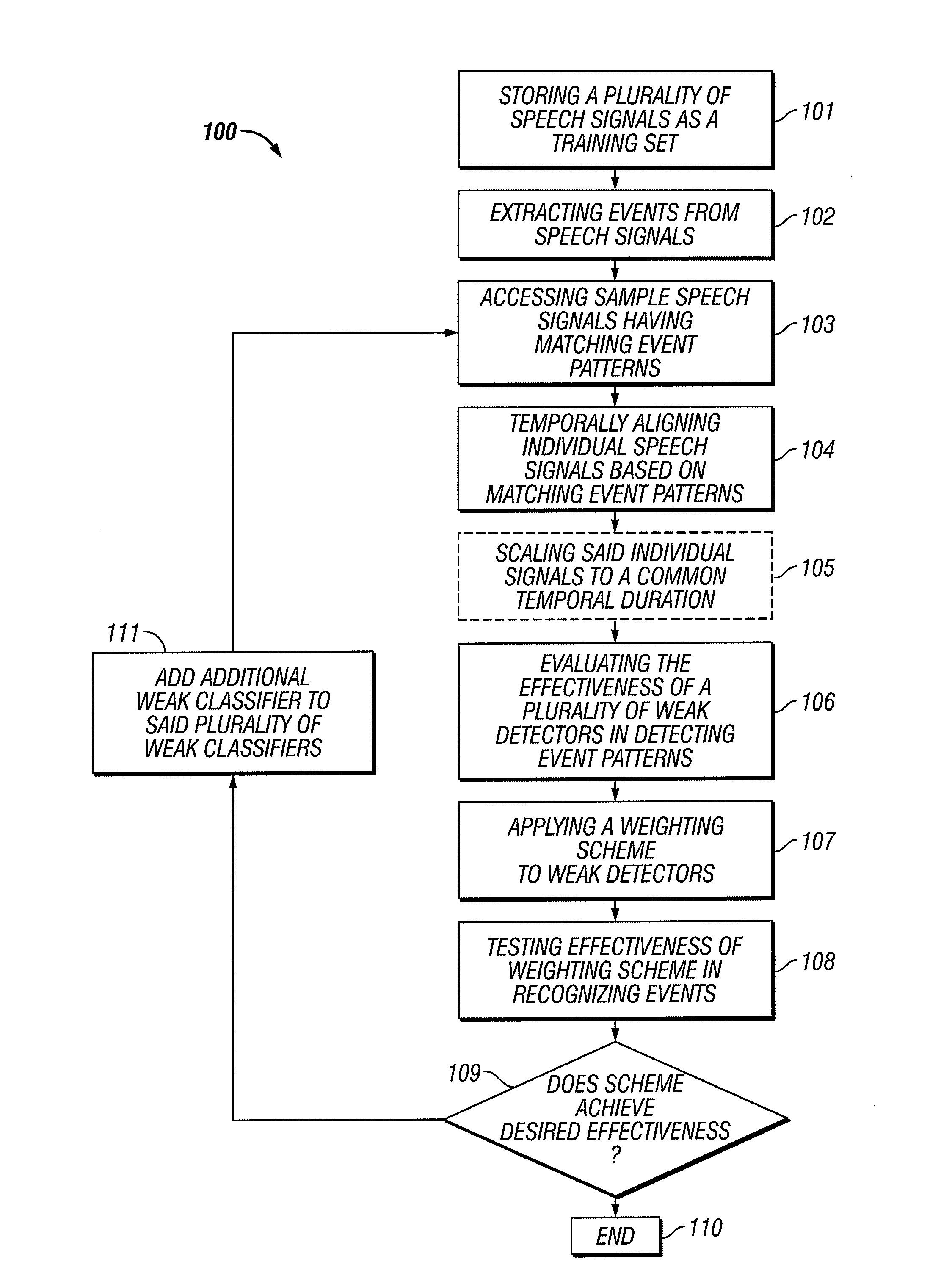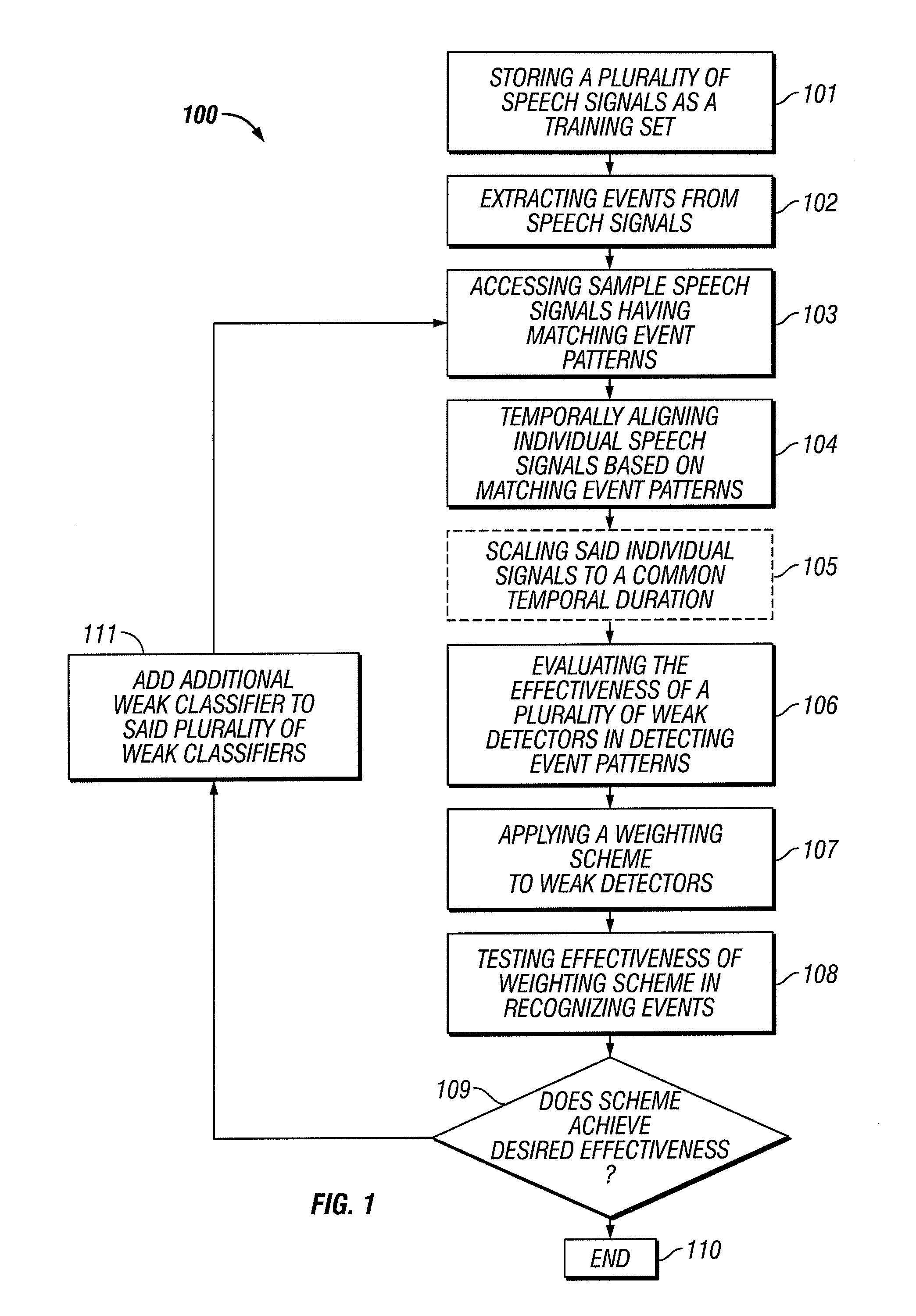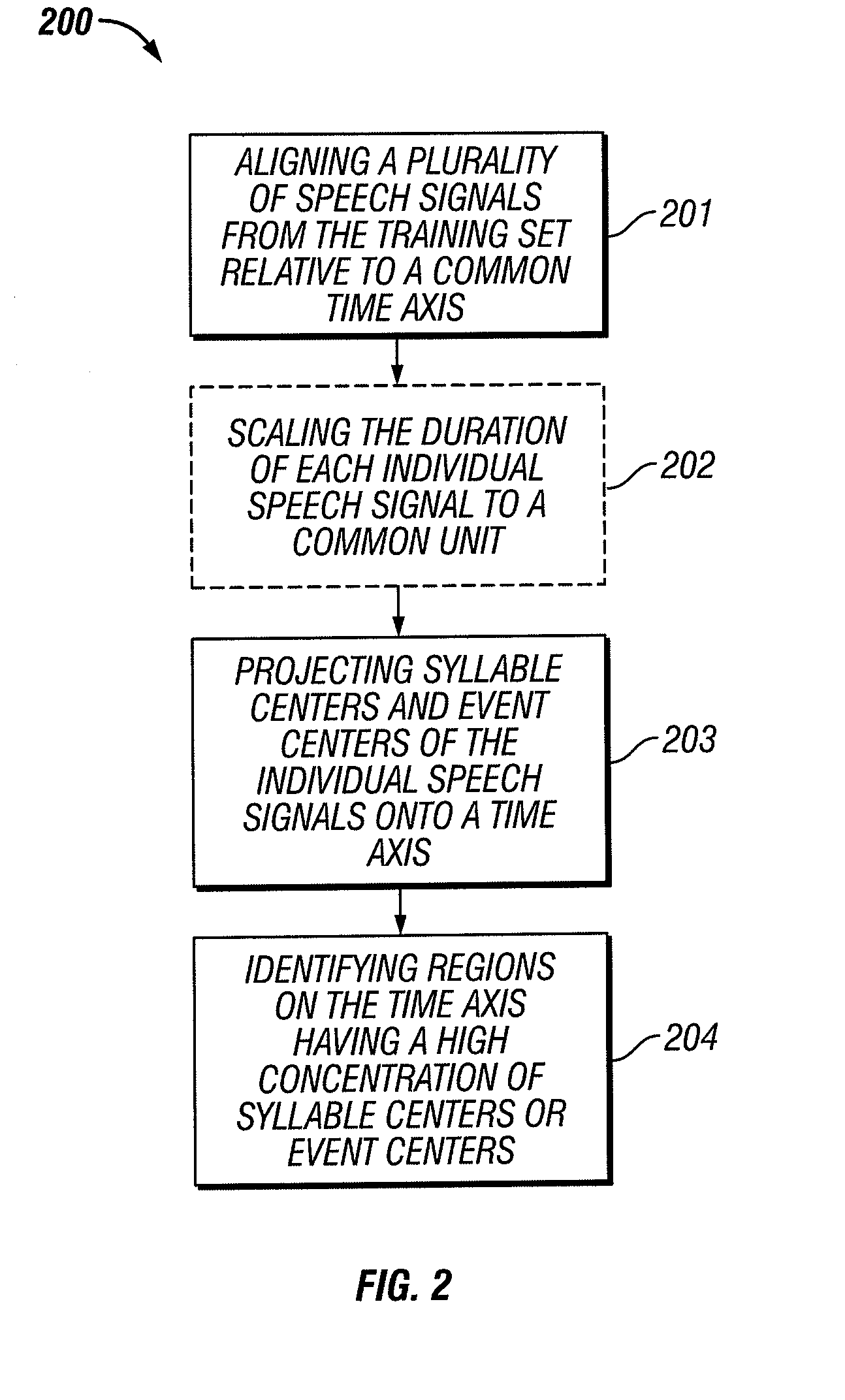System and method for automatic speech to text conversion
a technology of automatic speech and text conversion, applied in the field of automatic speech recognition, can solve the problems of insufficient use of temporal aspects of speech, non-uniform distribution of speech perception information in frequency, amplitude and time, and inability to fully exploit speech perception information, so as to reduce the complexity of ensembles and increase recognition performan
- Summary
- Abstract
- Description
- Claims
- Application Information
AI Technical Summary
Benefits of technology
Problems solved by technology
Method used
Image
Examples
Embodiment Construction
[0058]The invention relates to automatic learning of detectors and classifiers for speech recognition. More particularly, this invention is directed toward the automatic learning of detectors and classifiers which focus on the most robust and relevant aspects of the speech signal, including temporal information for the particular detection or classification task at hand.
[0059]In the presently preferred embodiments of the invention, the automatic speech recognition system is used in real-time television closed-captioning and word spotting environments.
[0060]Though automatic speech recognition has improved over the years it still does not approach human performance. Levels of noise which cause no difficulty for human listeners can often render state-of-the-art automatic speech recognition systems unusable. Improvements in accuracy have come, moreover, at the cost of increased processing time and computational complexity. In significant part these difficulties arise from the fact that ...
PUM
 Login to View More
Login to View More Abstract
Description
Claims
Application Information
 Login to View More
Login to View More - R&D
- Intellectual Property
- Life Sciences
- Materials
- Tech Scout
- Unparalleled Data Quality
- Higher Quality Content
- 60% Fewer Hallucinations
Browse by: Latest US Patents, China's latest patents, Technical Efficacy Thesaurus, Application Domain, Technology Topic, Popular Technical Reports.
© 2025 PatSnap. All rights reserved.Legal|Privacy policy|Modern Slavery Act Transparency Statement|Sitemap|About US| Contact US: help@patsnap.com



